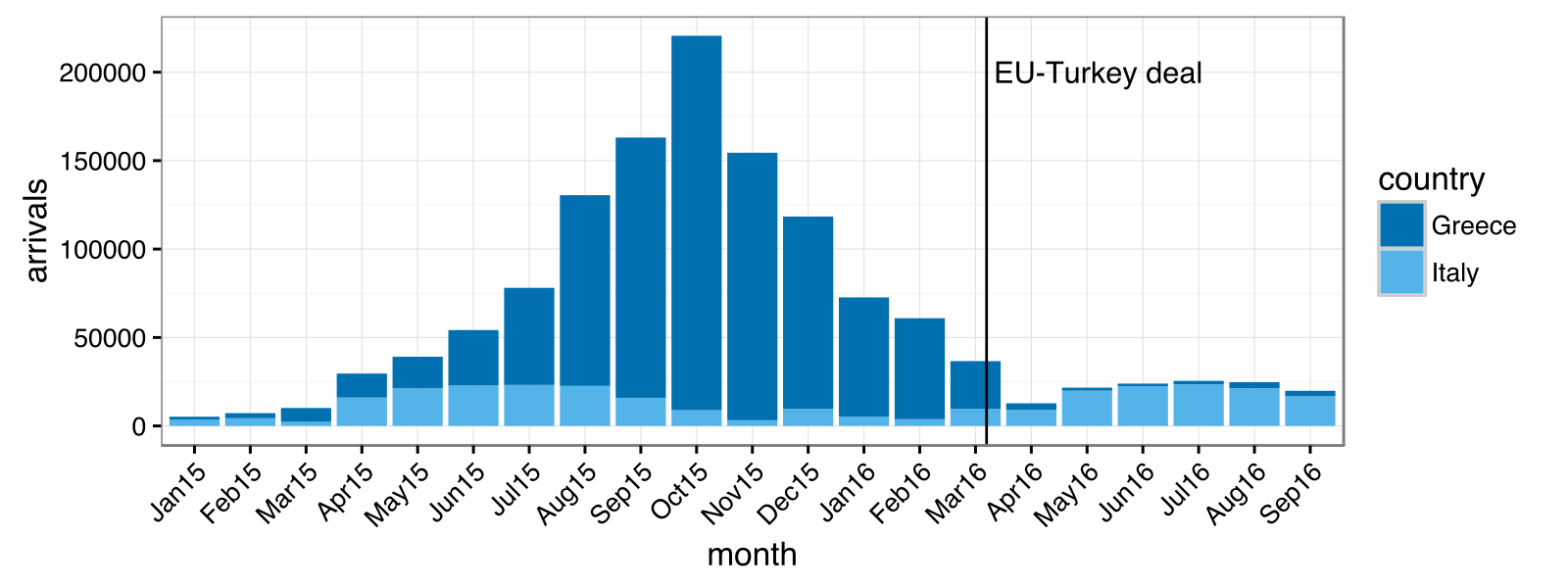|
Hotspot Camp
A hotspot camp is a refugee camp designed as the initial reception point for refugees on the borders of the European Union The European Union (EU) is a supranational political and economic union of member states that are located primarily in Europe. The union has a total area of and an estimated total population of about 447million. The EU has often been des .... The intention of the hotspots was to coordinate receiving, identifying, and registering refugees on the external borders of the EU.Maria Margarita Mentzelopoulou, Katrien Luyten, "Hotspots at EU external borders", ''European Parliamentary Research Service'' PE 623.563 (June 2018/ref> As of 2018, there were five hotspots in Greece, on islands off the Turkish coast, and five in southern Italy. Bibliography * Lauren Martin, Martina Tazziol, eds., "Governing Mobility Through The European Union's 'Hotspot' Centres: A Forum", ''Society and Space'', 201* Alessandra Sciurba, "Categorizing migrants by undermining the ... [...More Info...] [...Related Items...] OR: [Wikipedia] [Google] [Baidu] |
Refugee Camp
A refugee camp is a temporary settlement built to receive refugees and people in refugee-like situations. Refugee camps usually accommodate displaced people who have fled their home country, but camps are also made for internally displaced people. Usually, refugees seek asylum after they have escaped war in their home countries, but some camps also house environmental and economic migrants. Camps with over a hundred thousand people are common, but as of 2012, the average-sized camp housed around 11,400. They are usually built and run by a government, the United Nations, international organizations (such as the International Committee of the Red Cross), or non-governmental organization. Unofficial refugee camps, such as Idomeni in Greece or the Calais jungle in France, are where refugees are largely left without support of governments or international organizations. Refugee camps generally develop in an impromptu fashion with the aim of meeting basic human needs for only a shor ... [...More Info...] [...Related Items...] OR: [Wikipedia] [Google] [Baidu] |
Refugee
A refugee, conventionally speaking, is a displaced person who has crossed national borders and who cannot or is unwilling to return home due to well-founded fear of persecution.FAQ: Who is a refugee? ''www.unhcr.org'', accessed 22 June 2021 Such a person may be called an until granted by the contracting state or the |
European Union
The European Union (EU) is a supranational political and economic union of member states that are located primarily in Europe. The union has a total area of and an estimated total population of about 447million. The EU has often been described as a '' sui generis'' political entity (without precedent or comparison) combining the characteristics of both a federation and a confederation. Containing 5.8per cent of the world population in 2020, the EU generated a nominal gross domestic product (GDP) of around trillion in 2021, constituting approximately 18per cent of global nominal GDP. Additionally, all EU states but Bulgaria have a very high Human Development Index according to the United Nations Development Programme. Its cornerstone, the Customs Union, paved the way to establishing an internal single market based on standardised legal framework and legislation that applies in all member states in those matters, and only those matters, where the states have agreed to act ... [...More Info...] [...Related Items...] OR: [Wikipedia] [Google] [Baidu] |
Refugee Camps In Europe
A refugee, conventionally speaking, is a displaced person who has crossed national borders and who cannot or is unwilling to return home due to well-founded fear of persecution.FAQ: Who is a refugee? ''www.unhcr.org'', accessed 22 June 2021 Such a person may be called an until granted by the contracting state or the |
European Migrant Crisis
The 2015 European migrant crisis, also known internationally as the Syrian refugee crisis, was a period of significantly increased movement of refugees and migrants into Europe in 2015, when 1.3 million people came to the continent to request asylum, the most in a single year since World War II. Those requesting asylum in Europe in 2015 were mostly Syrians, but also included significant numbers of Afghans, Nigerians, Pakistanis, Iraqis and Eritreans, as well as economic migrants from the Balkans. Europe had already begun registering increased numbers of refugee arrivals in 2010 due to a confluence of conflicts in parts of the Middle East, Asia and Africa, particularly the wars in Syria, Iraq and Afghanistan, but also terrorist insurgencies in Nigeria and Pakistan, and long-running human rights abuses in Eritrea, all contributing to refugee flows. Many millions initially sought refuge in comparatively stable countries near their origin, but while these countries were largely ... [...More Info...] [...Related Items...] OR: [Wikipedia] [Google] [Baidu] |



